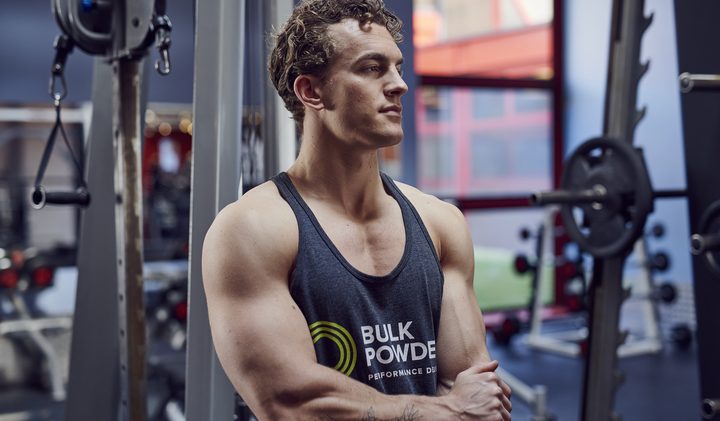What is the best way to train each body part for your goals?
Let me guess – when you started training, you copied workouts from the “Pros”. You took screenshots from social media (or, if you’re really old school, tore them out of magazines). Mr Olympia’s brutal biceps workout revealed! The World Champion’s secret to insane calves!
But as time went on, you realised that those Pro-level workouts aren’t the best way to approach your own training. (Honestly, they’re probably not how the pro bodybuilders train anyway!).
So now you’re here. Ready to move away from the classic body part split, but not sure what’s best.
Let’s examine the most popular training splits.
BODY PART SPLITS
What is it? This is probably the way you started out in the gym. It’s a old-school bodybuilder approach to training. You know the kind of thing: usually chest and triceps on a Monday, back and biceps on another day, legs separately, and shoulders on a different day. If you were really going for it, you might train legs twice in a body-part split training style, with quads one day and hams/glutes another.
Pros: lots of volume and variety in this approach, means you can really hit each body part hard
Cons: each body part only gets worked once a week, which is sub-optimal in terms of frequency
How many days per week? Usually 4, 5, or 6
Suits you if: you prefer to focus solely on one body part to feel you’ve hammered it hard
PUSH/PULL/LEGS
What is it? Push (chest, shoulders, triceps), pull (back, rear delts, biceps), and legs on separate days
Pros: hitting more muscle groups per day means you will work them with more frequency across the week
Cons: you may feel that you don’t work certain muscles enough (although if you train properly, you will!)
How many days per week? 3+
Suits you if: you want to reduce the amount of time between training the same muscle groups
UPPER/LOWER
What is it? Upper body one day, lower body another day
Pros: a simple approach to getting it all done, with enough frequency during the week to do different exercise choices
Cons: you may feel that you don’t have time to work everything
How many days per week? 4+
Suits you if: you can’t always predict how many days a week you train, and you want to be sure you work everything
FULL BODY WORKOUTS
What is it? Full body training every session
Pros: great for frequency, and you will know that you’ve worked every muscle group every time you train
Cons: not much volume per muscle group per session (so training frequency is key)
How many days per week? 3-4
Suits you if: you have at least one day off between sessions, but can guarantee 3-4 sessions per week
TOTAL TRAINING VOLUME
Whatever training split you choose, it’s important to look at training volume across the week. Split total volume between the sessions you have available. Remember that smaller muscle groups can be trained more frequently and with less recovery between sessions. Larger muscle groups can be trained two or three times a week, if total training volume is taken into account.
In general, think about training large muscle groups for 9-15 working sets across the week, and smaller muscle groups for 6-9 working sets across the week. This is a baseline: see how you feel and add to this volume if you recover well.
RECOVERY IS KEY
You’ll need to factor recovery into your training split plans. Muscle groups, CNS, and energy levels all need sufficient recovery time. It makes sense to not train – say – back and deadlifts on concurrent days. Monitor your recovery time as well as your results. Make sure you are getting enough protein to support recovery, and consider using Instant BCAAs if you don’t already do so.
WHICH TRAINING SPLIT FOR YOU?
What’s your training age? How many days per week will you train? How long do you have for each session? Do you have any favourite body parts and exercises? What body parts are lagging and weak?
Almost any training split will work to an extent. You need to choose one that works for you – right now – with your lifestyle, work, social life, and training goals.
Hopefully you’re in the lifting game for the long term, so there’s plenty of time to try a different style.
Then choose the training plan that hits your preferences. Stick with it, and you’ll see results.
